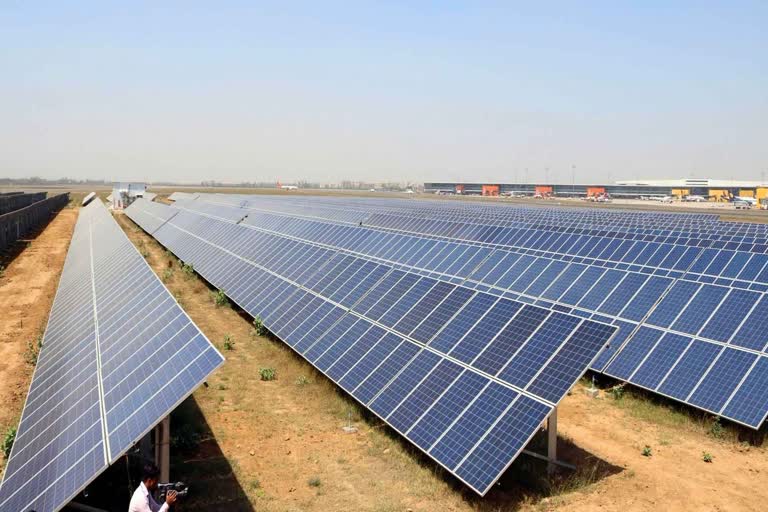Hyderabad: Beginning 2007, India’s power generation capacity zoomed by nearly three times from 132 gigawatt (GW) to 370GW. Policy focus by UPA, triggered addition of 121GW coal-based capacities during 2007-17. The Modi government pushed solar capacity by 10-times to 34GW in the last five years.
However, such huge investment in generation, mostly by the private sector, failed to trigger a manufacturing boom and employment generation in power gear and allied sectors.
At least 30 per cent orders for coal power equipment and 90 per cent for solar cells and modules went to China. Vast and efficient domestic capacities, particularly in the coal-power gear market, suffered gross underutilization.
There are many reasons behind this dismal outcome. However, single out, shoddy planning, inconsistent policies and suspected play of vested interests sealed India’s fate vis-à-vis an ever alert and opportunistic China. Opaque systems were an added advantage to Beijing.
Shoddy planning
Take the case of coal-power. Till 2007, India made it a practice to miss capacity addition targets by wide margin. Actual addition ranged between 15 and 20 GW every five years with the state sector at the forefront of both generation and equipment supply.
UPA broke the jinx in Eleventh Plan (2007-12) but without corresponding ramp up in power gear manufacturing, then led by State-controlled BHEL. China grabbed the opportunity. The Left Front government in Bengal ordered the first China-made plant in the utility segment.
As India projected huge capacity addition in the coal-power segment till 2022, private investment rushed in boiler-turbine-generator (BTG) manufacturing.
By 2012, India had at least five new entrants, all having tie-ups with top MNCs. The combined capacity grew to 30GW equipment a year, twice the average annual requirement in 12th Plan. But, by that time independent power producers (IPP) fell in love with China.
Read more:Why even Ganesha idols are imported from China, questions Finance Minister
While BTG makers were looking forward to tapping the future demand, the whole projection proved a hoax.
On the one hand, the government failed to ensure coal availability. On the other hand, huge over-supply and falling tariffs took the wind out of the thermal sector. Over the last 10 years, the plant load factor (PLF) in coal-power dropped from 71 per cent to 50 percent.
Investments both in generation and equipment sectors suffered miserably, straining the entire financial sector. Banks almost stopped financing the power sector. Prime Minister Narendra Modi’s 100GW solar plan (by 2022), added a new twist to the story.
Inconsistent policies
The Modi government was not wrong in upping the stake in solar, which is witnessing dramatic improvement in technologies and falling tariff over the last 10 years. Since renewables operate at low PLF, capacity ramp up will have limited supply side impact in electricity trade.
However, from the national policy making point of view, a graded approach was missing. The same BTG makers, who invested based on policy projections, were told that barring some 70GW projects in the pipeline, India wouldn’t plan new coal-power plants till 2027.
Worse, while India is currently installing 6.5GW solar generation capacities a year. The homegrown solar equipment manufacturing capacities are suffering low utilization.
The National Solar Mission, which was launched by the UPA and taken forward by NDA, had a domestic content requirement (DCR) clause. It was struck down by the WTO in 2016 based on complaints from the US. China went away with the cream.
A safeguard duty imposed by India in 2018, reduced the flow of imports temporarily. However, from the perspective of the common Indian, employment opportunities lost in coal-power equipment manufacturing were not replaced by solar.
Why China?
It is often said that cost is a major attraction of Chinese equipment. On average Chinese equipment is 15-20 per cent cheaper. There are some fundamental reasons behind it too.
In India, over 200 Indian units have a combined capacity to produce 3GW solar PV cells and 8GW PV modules. They are too small when compared to China’s gigantic facilities (having 65 percent of world capacity of nearly 115 GW PV cell and module) and lose out on economies of scale.
Moreover, half of the Indian units are in export processing zones. They were set up in the past, when solar was a lifestyle choice for the rich, with an export objective. They attract customs duties for domestic sales.
However, it is questionable if all these can justify such a huge cost difference. Many allege that China directs huge State subsidies to the sector, taking advantage of its opaque financial system and, thereby, giving WTO glare a miss.
Either way, there is little doubt that Chinese equipment makers offer exceptionally easy terms, when compared with any other nation. This was also evident in the thermal equipment sector, where China was less likely to have any explainable advantage, over Indian producers.
And, that takes us to the question what are these terms and who pays for it. As in 2017, 60 percent of the 34 stressed power assets were run on Chinese equipment. Is it a coincidence or there is more to it? Beginning with Enron, the power sector was never short of wrong instances.
(Article by Pratim Ranjan Bose. He is a Kolkata-based senior business journalist. Views expressed above are personal.)



